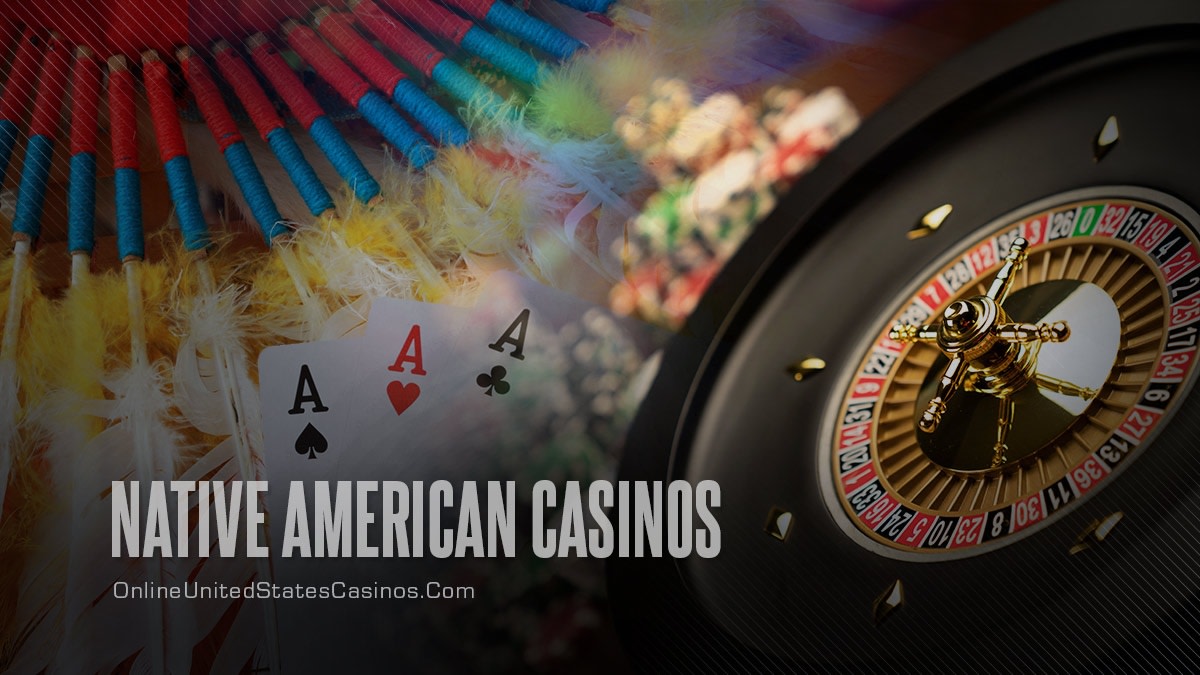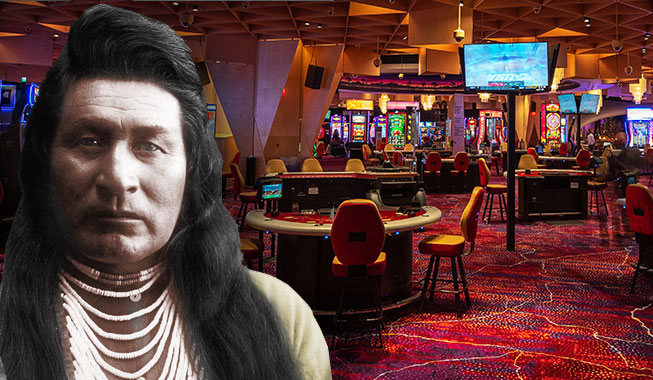
The Dice Roll of Destiny: How Native American Casinos Reshaped Tribal Economies and Sovereignty
For centuries, Native American reservations were often synonymous with poverty, neglect, and systemic disenfranchisement. Remote and resource-poor, many tribal communities faced chronic unemployment, inadequate healthcare, and crumbling infrastructure, legacies of forced relocation and broken treaties. But in the late 20th century, a transformative force emerged from an unlikely source: high-stakes bingo and, eventually, full-fledged casinos. What began as a desperate measure to generate revenue on sovereign lands has blossomed into a multi-billion dollar industry, fundamentally reshaping the economic landscape for many tribes and offering a powerful, albeit complex, path to self-determination.
The story of Native American gaming is inextricably linked to the concept of tribal sovereignty – the inherent right of tribes to govern themselves, manage their lands, and provide for their people, a right recognized by the U.S. Constitution and numerous treaties. This sovereignty, however, often existed in principle more than practice, especially when it came to economic independence.

The turning point arrived with the landmark 1987 Supreme Court case, California v. Cabazon Band of Mission Indians. The Court ruled that if a state permitted any form of gambling, it could not prohibit tribes from operating similar gaming activities on their sovereign lands, as long as the tribe complied with federal law. This decision paved the way for the Indian Gaming Regulatory Act (IGRA) of 1988, the foundational legislation that governs tribal gaming today. IGRA established a framework for tribal-state compacts, defined different classes of gaming, and created the National Indian Gaming Commission (NIGC) to regulate the industry.
"IGRA wasn’t just about gambling; it was about recognizing our inherent right to economic development," says Joseph Kalt, co-director of Harvard University’s Harvard Project on American Indian Economic Development. "For the first time, tribes had a tool to generate substantial, self-controlled revenue, largely free from state taxation, that could be directly invested back into their communities."
From Desperation to Development: The Economic Windfall
The numbers tell a compelling story. According to the National Indian Gaming Commission, tribal gaming generated approximately $40.9 billion in gross gaming revenue in 2022, a significant rebound from pandemic lows. This figure represents the economic output of nearly 500 gaming operations run by 250 tribal nations across 29 states. It’s a testament to the scale of an industry that, just a few decades ago, barely existed.
The most visible impact of this revenue is the transformation of tribal services. Before gaming, many reservations relied heavily on often insufficient federal funding for basic needs. Casino profits have allowed tribes to build and operate their own hospitals and health clinics, vastly improving access to care for their members. They’ve funded state-of-the-art schools, tribal colleges, and scholarship programs, breaking cycles of intergenerational poverty through education. Housing programs have replaced dilapidated structures with modern homes, and vital infrastructure – roads, water systems, high-speed internet – has been developed, often in areas previously neglected by state or federal governments.
"We used to have to send our elders off the reservation for decent healthcare, and our kids had to leave to get a good education," explains a tribal leader from the San Manuel Band of Mission Indians in California, one of the most successful gaming tribes. "Now, we have our own facilities, our own schools. Our people can stay here, thrive here, and contribute to our community. That’s the real impact of gaming – it allows us to care for our own, on our own terms."
Beyond direct services, tribal gaming has become a significant engine for job creation. While specific numbers vary, it’s estimated that tribal casinos directly employ hundreds of thousands of people, both Native and non-Native. These jobs often come with competitive wages and benefits, providing stable employment in regions that may otherwise have limited economic opportunities. Moreover, the industry generates significant indirect employment through the purchase of goods and services – from food suppliers and construction companies to marketing firms and IT providers – creating a ripple effect throughout local and regional economies.
Diversification and Cultural Preservation

One of the less visible, but equally vital, impacts of gaming revenue is its use in economic diversification. Recognizing the inherent volatility of the gaming industry and the potential for market saturation, many tribes have strategically invested their casino profits into non-gaming ventures. These investments range from hotels, resorts, and entertainment complexes that complement their casinos, to unrelated businesses such as manufacturing plants, financial services, energy projects, and even professional sports teams (as seen with the Mohegan Tribe’s ownership of the WNBA’s Connecticut Sun).
This diversification strategy is crucial for long-term sustainability. It creates alternative revenue streams, reduces reliance on gambling income, and builds a more resilient economic base for future generations. "Gaming gave us the capital, but true nation-building means building an economy that can stand on its own feet, even if the gaming market shifts," notes an economic development consultant working with several tribes.
Perhaps most profoundly, gaming revenues have provided unprecedented resources for cultural preservation and revitalization. Many tribes are investing in language immersion programs, teaching their ancestral languages to younger generations, a critical effort to reverse decades of forced assimilation. Museums, cultural centers, and traditional arts programs are being funded, ensuring that tribal histories, ceremonies, and artistic traditions are maintained and celebrated. These investments reinforce tribal identity and pride, countering the historical erosion of cultural practices.
The Complexities and Challenges
Despite the undeniable successes, the narrative of Native American gaming is not without its complexities and challenges.
Firstly, success is not universal. The vast majority of tribal gaming revenue is concentrated among a relatively small number of tribes, primarily those located in or near major metropolitan areas or popular tourist destinations. Tribes in remote regions, or those with smaller populations, often struggle to compete or attract sufficient customers, highlighting the critical role of geographic advantage. "We might have a casino, but if you’re a hundred miles from the nearest city, it’s not going to generate the kind of revenue you see in Southern California or Connecticut," explains a leader from a Plains tribe.
Secondly, the relationship between tribes and states over gaming is often fraught. While IGRA mandates tribal-state compacts for Class III gaming (casino-style games), the terms of these compacts, particularly revenue sharing, can be contentious. States often seek a significant share of tribal gaming profits in exchange for exclusive gaming rights or other concessions, leading to protracted negotiations and legal battles. Tribes argue that these payments diminish the funds available for tribal services and undermine their sovereignty.
Thirdly, the rapid influx of wealth has, in some instances, led to internal tribal divisions, particularly over the distribution of per capita payments to tribal members versus reinvestment in community infrastructure and services. While per capita payments can significantly improve individual members’ lives, an overemphasis on them can limit the long-term growth and sustainability of tribal governments and enterprises.
Finally, critics often raise concerns about the social costs of gambling, such as addiction and increased crime rates. While these issues are legitimate concerns for any community with a casino, studies and tribal efforts suggest that tribes are often proactive in addressing them. Many tribal casinos fund responsible gaming programs, offer addiction counseling, and implement strict security measures, recognizing that the well-being of their community is paramount. Data often show that crime rates on or near reservations with casinos are comparable to, or even lower than, surrounding non-tribal communities.
Looking Ahead: Beyond the Casino Floor
Native American gaming has undeniably transformed the economic landscape for many tribal nations, providing a powerful engine for self-sufficiency and a tangible expression of sovereignty. It has allowed tribes to reclaim control over their destinies, invest in their people, and revitalize their cultures in ways unimaginable just a few decades ago.
However, the future of tribal economies lies not just on the casino floor. The most successful tribes are those that view gaming as a means to an end – a strategic tool to generate capital for broader economic diversification, cultural preservation, and the sustained well-being of their communities. As tribes continue to navigate the complexities of this industry, their journey serves as a powerful testament to resilience, self-determination, and the enduring spirit of Native American nation-building in the 21st century. The dice may have rolled in their favor, but it is their foresight and leadership that are building lasting legacies.


